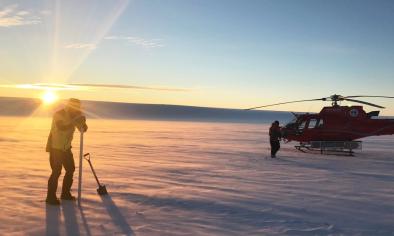Science Source
Non‐annular atmospheric circulation change induced by stratospheric ozone depletion and its role in the recent increase of Antarctic sea ice extent
- Demonstrates that the annual mean extent of Antarctic sea ice has increased at a statistically significant rate of 0.97% dec−1 since the late 1970s, based on a new analysis of passive microwave satellite data
- Finds that the largest increase has been in autumn when there has been a dipole of significant positive and negative trends in the Ross and Amundsen-Bellingshausen Seas respectively
- Finds that the autumn increase in the Ross Sea sector is primarily a result of stronger cyclonic atmospheric flow over the Amundsen Sea
- Model experiments suggest that the trend towards stronger cyclonic circulation is mainly a result of stratospheric ozone depletion, which has strengthened autumn wind speeds around the continent, deepening the Amundsen Sea Low through flow separation around the high coastal orography
- Finds, however, that statistics derived from a climate model control run suggest that the observed sea ice increase might still be within the range of natural climate variability
Related Content
Headline

Jan 29, 2020 | BBC News
Journey to the 'doomsday glacier'
Headline

Nov 22, 2019 | NOAA Climate.gov
Understanding climate: Antarctic sea ice extent
Headline

Mar 26, 2019 | The Guardian
Australian researchers find huge lakes beneath largest east Antarctic glacier
Science Source
| Geophysical Research Letters
Mass Loss of Totten and Moscow University Glaciers, East Antarctica, Using Regionally Optimized GRACE Mascons
Yara Mohajerani, Isabella Velicogna, Eric Rignot


